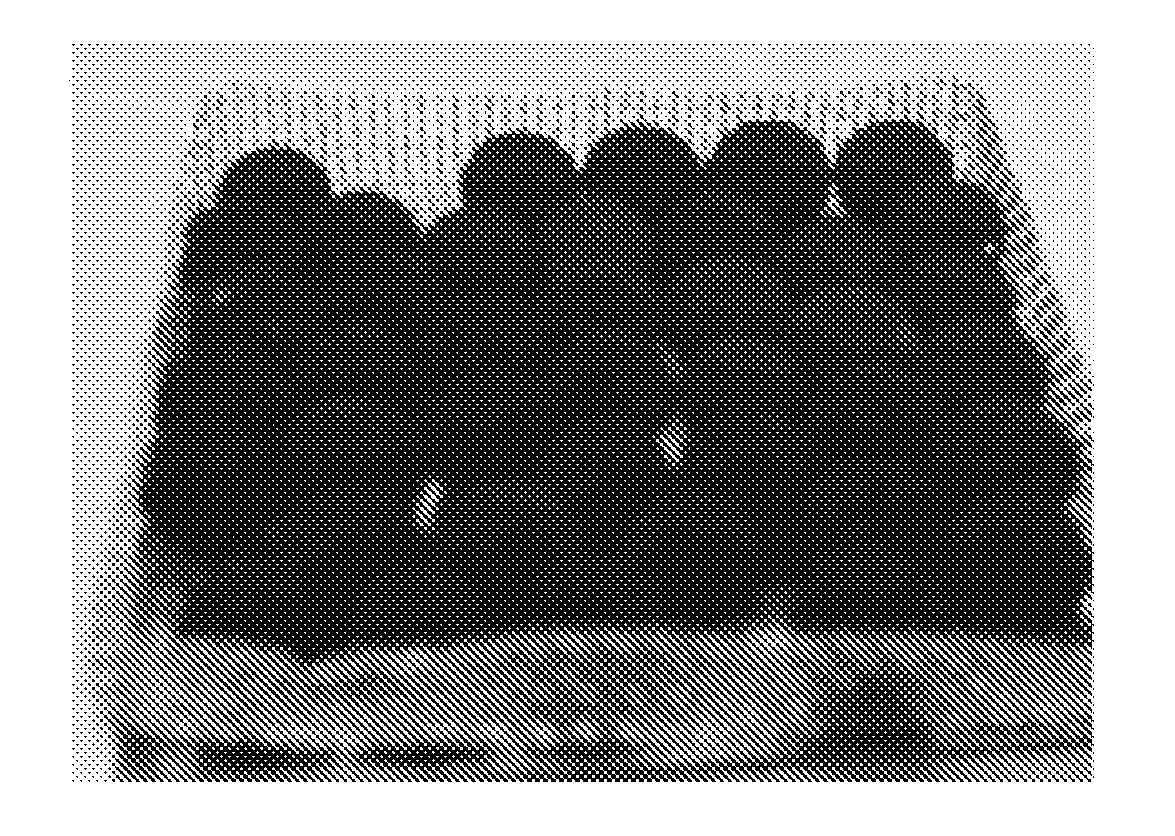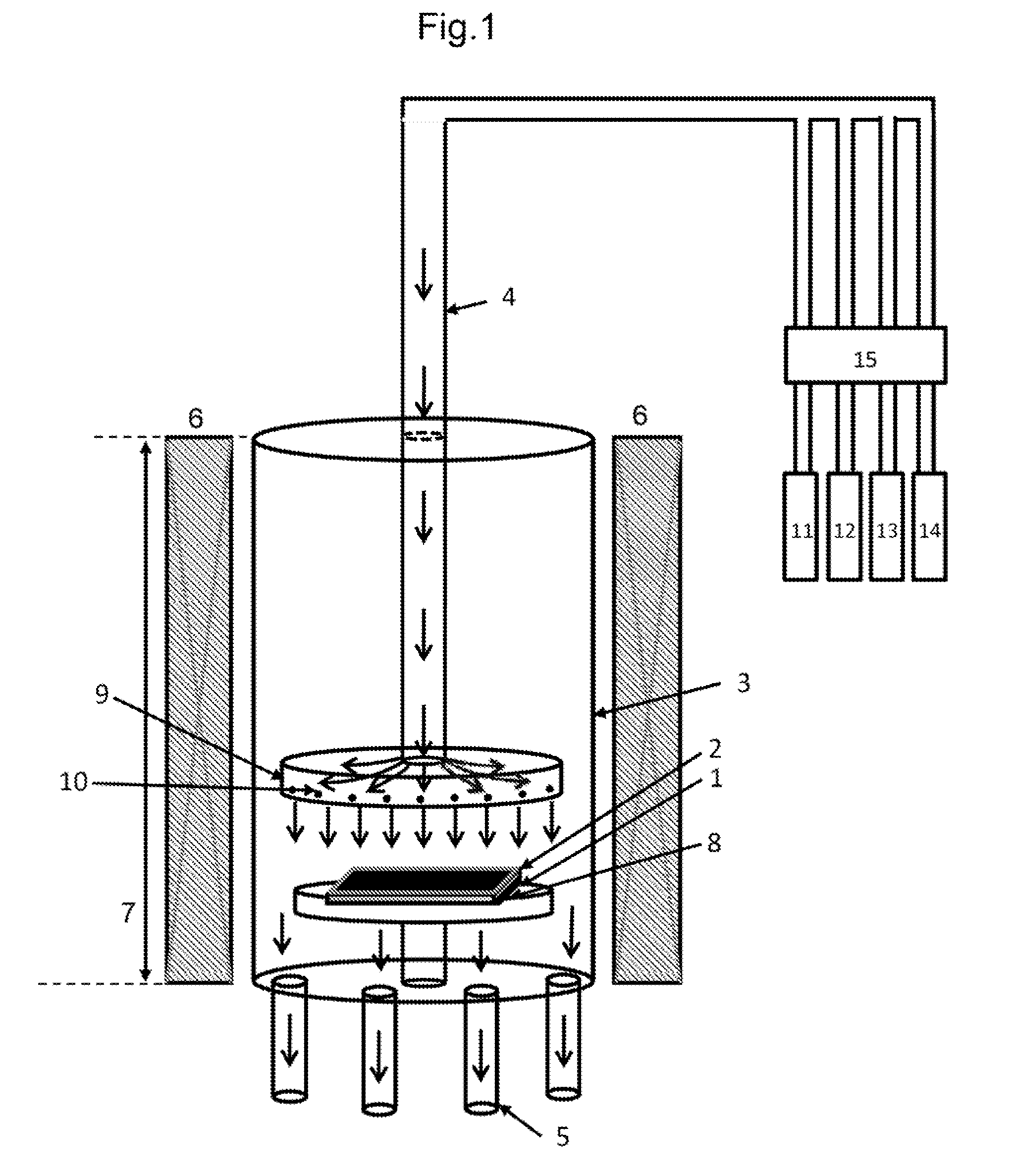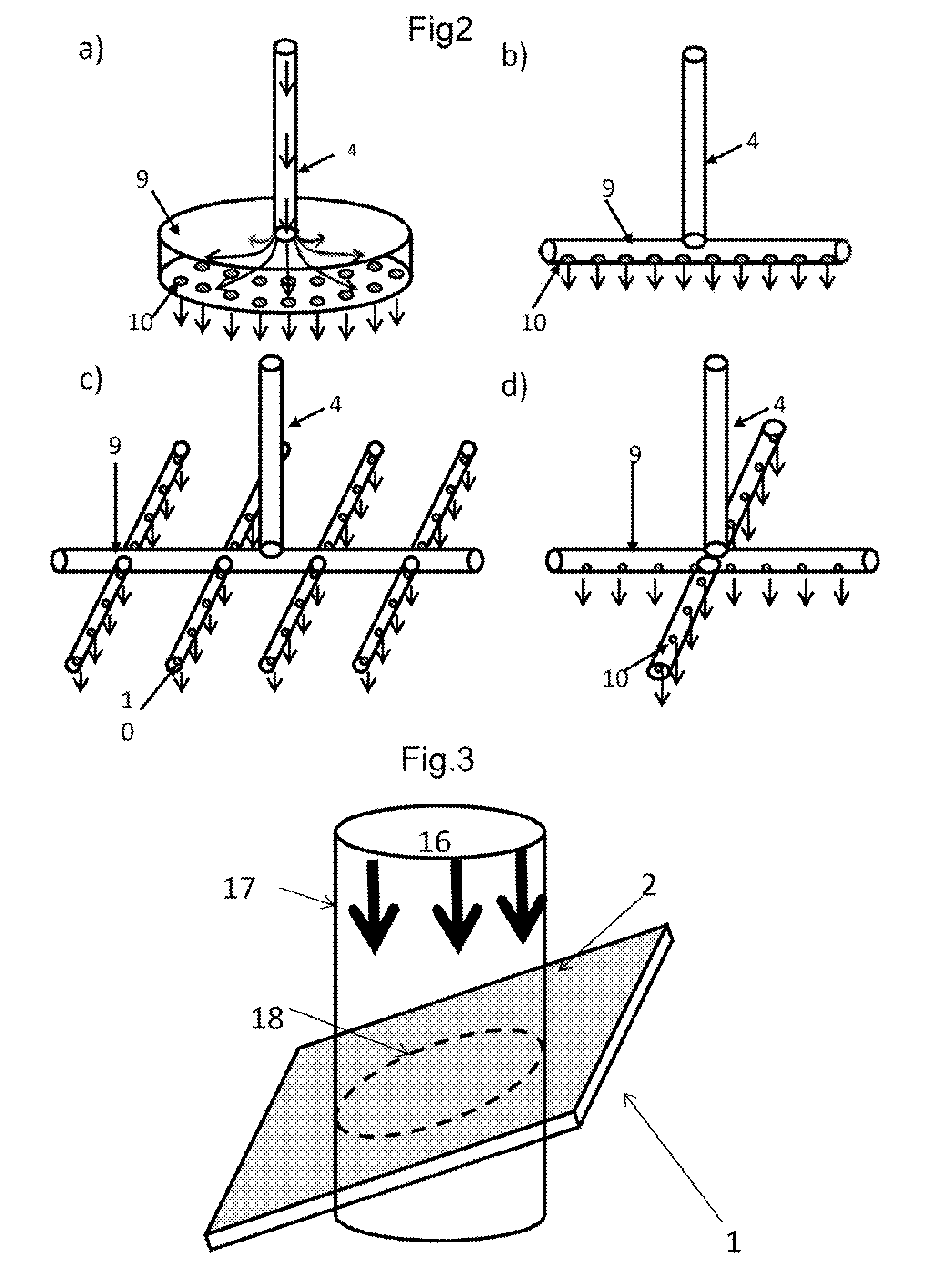Method for producing carbon nanotube assembly having high specific surface area
a carbon nanotube and assembly technology, applied in the direction of catalyst activation/preparation, physical/chemical process catalysts, metal/metal-oxide/metal-hydroxide catalysts, etc., can solve the problem of reducing the efficiency of cnt growth, preventing efficient cnt growth, and the method is also problematic in terms of cost, so as to suppress the generation of carbon impurities, reduce feedstock gas waste, and increase the effect of carbon efficiency
- Summary
- Abstract
- Description
- Claims
- Application Information
AI Technical Summary
Benefits of technology
Problems solved by technology
Method used
Image
Examples
example 1
[0167]A CNT assembly was produced by using the CNT producing apparatus shown in FIG. 1, and a method similar to the CNT producing method described in the Best Mode. Descriptions will be given with reference to FIG. 1.
[0168]A quartz tube (inner diameter, 80 mm) such as a cylinder was used as the vertical synthesis furnace 3. The heating means 6 and the heating region 7 had a length of 260 mm.
[0169]A base holder 8 made of quartz was provided 50 mm downstream from a horizontal position at the center of the heating region 7. The base holder 8 was horizontally installed to allow a flat base 1 to be placed thereon.
[0170]A gas supply pipe 4 made of a heat-resistant alloy and having a diameter of 22 mm (inner diameter, 20 mm) was provided through the upper wall of the synthesis furnace 3 by being vertically inserted through an opening provided through the upper wall of the synthesis furnace 3. The gas exhaust pipes 5 were provided through the bottom wall by being vertically inserted through...
example 2
[No Carbon Impurity Adhesion Suppressing Step]
[0198]A CNT assembly was synthesized according to the producing method of Example 1, using the same producing apparatus, base, and catalyst used in Example 1, without performing the carbon impurity adhesion suppressing step. The CNT assembly was immediately taken out of the heating region 7 after the synthesis. The CNT assembly grew, and had a specific surface area of about 900 m2 / g.
[0199]The yield remained unchanged during the 50 runs of continuous CNT assembly production. However, the specific surface area gradually decreased after 20 runs, and had a value of 800 m2 / g or less after 30 runs.
example 3
[No Gas Flow Forming Means]
[0200]In the producing apparatus of Example 1, the feedstock gas was blown onto the catalyst on the base 1 through the gas supply pipe 4 disposed 20 mm above the base 1, without using the gas flow forming means 9. The CNT assembly growth was uneven at the central portion and the peripheral portion of the catalyst layer 2 on the base 1, and the CNT assembly synthesized on the whole surface of the catalyst layer was slightly non-uniform. The yield was 0.4 mg / cm2, and the specific surface area was about 1,100 m2 / g. There were no fluctuations both in yield and specific surface area during the continuous production.
PUM
| Property | Measurement | Unit |
|---|---|---|
| diameter | aaaaa | aaaaa |
| temperature | aaaaa | aaaaa |
| height | aaaaa | aaaaa |
Abstract
Description
Claims
Application Information
 Login to View More
Login to View More - R&D
- Intellectual Property
- Life Sciences
- Materials
- Tech Scout
- Unparalleled Data Quality
- Higher Quality Content
- 60% Fewer Hallucinations
Browse by: Latest US Patents, China's latest patents, Technical Efficacy Thesaurus, Application Domain, Technology Topic, Popular Technical Reports.
© 2025 PatSnap. All rights reserved.Legal|Privacy policy|Modern Slavery Act Transparency Statement|Sitemap|About US| Contact US: help@patsnap.com



